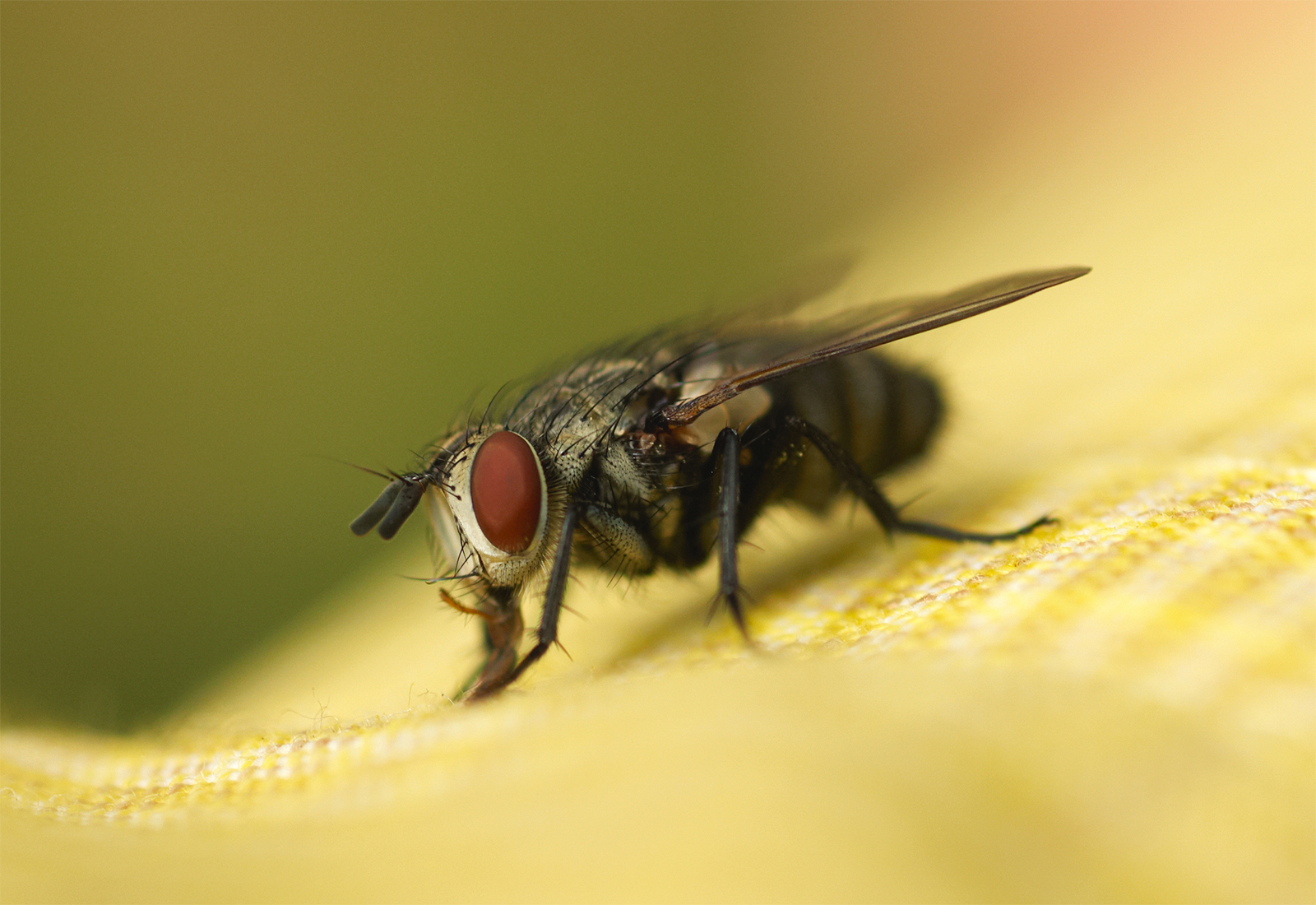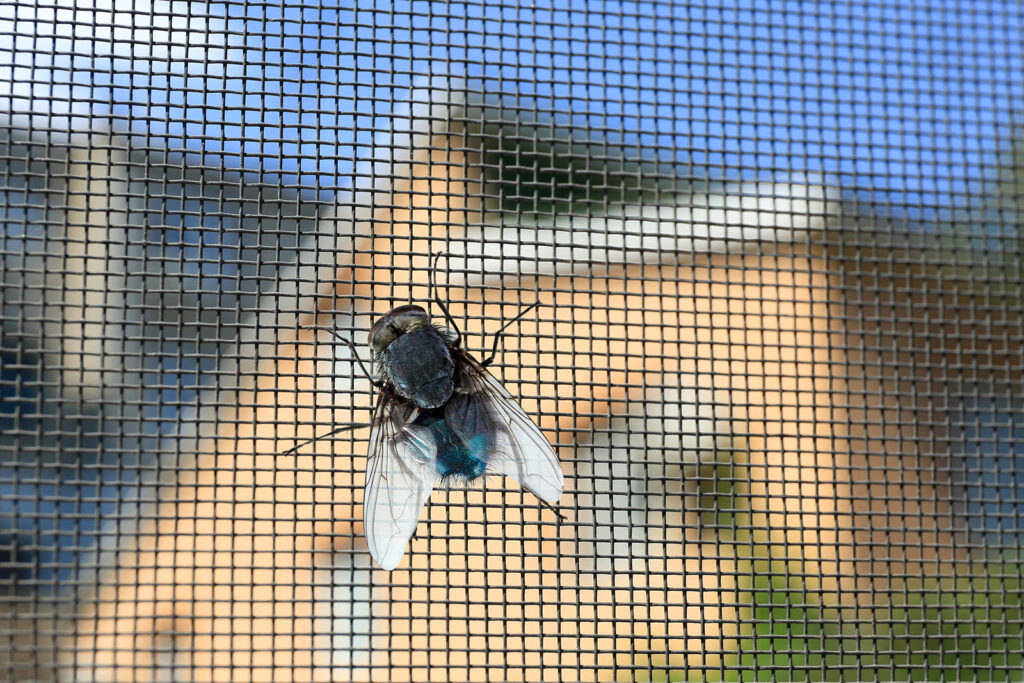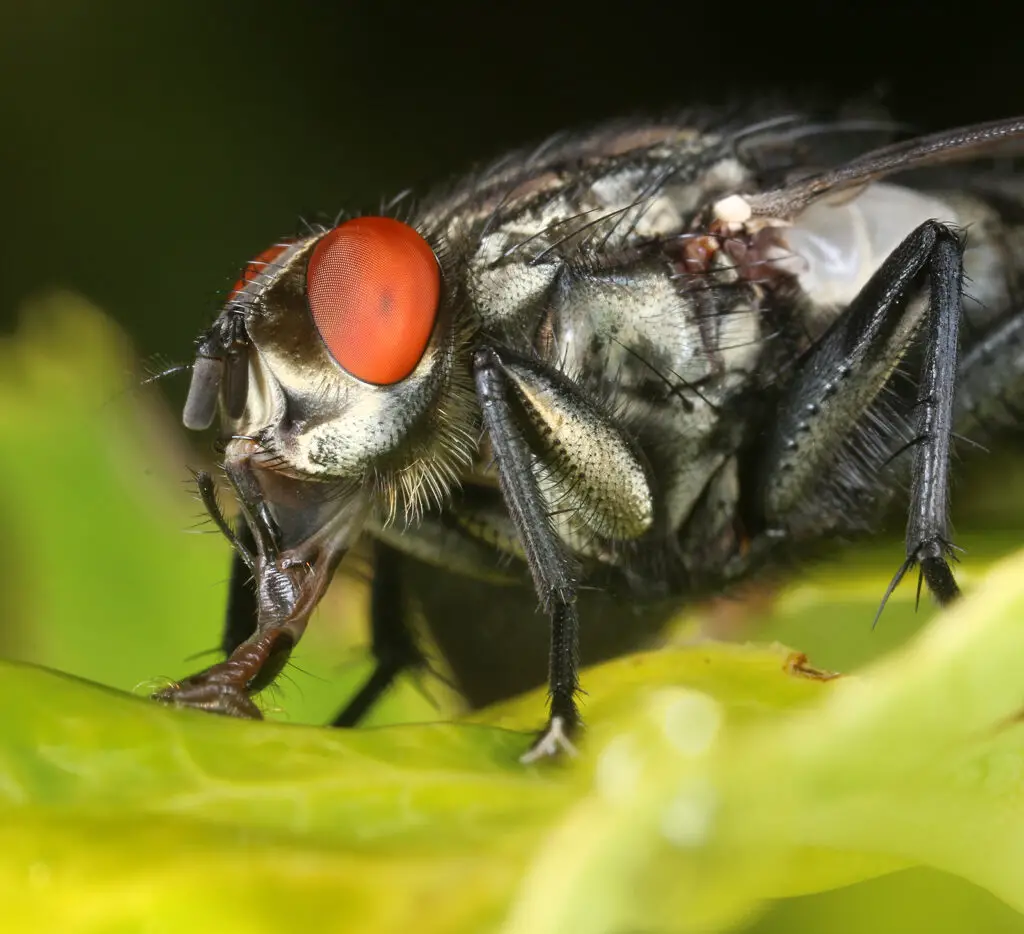
I’m sure I’m not the only one who’s wondered whether flies, like humans, need sleep. It’s interesting to consider how these tiny creatures handle something as essential as rest, and their sleeping habits have long been the subject of my curiosity.
Flies sleep with their eyes open as they do not have eyelids, making it impossible for them to close their eyes as humans do. Instead, they will regularly use their feet to clean their eyes to ensure their vision remains unobstructed. They do this even while sleeping!
Studies have also shown that the sleep cycles of flies share some similarities with those of humans. Just like us, they experience periods of light sleep, known as rapid eye movement (REM) sleep, as well as deep sleep, or non-REM sleep. The intriguing connections between the sleep habits of flies and humans truly highlight the complexities of these tiny creatures and their world.
Understanding Fly Eyes
Faceted Eyes Structure
Flies have compound eyes, which are made up of thousands of individual lenses called ommatidia. These lenses work together to provide the fly with a wide field of vision, allowing them to detect movements and changes in their environment. Unlike mammal eyes, the structure of fly eyes allows them to see multiple images at once, creating a mosaic-like vision that helps them navigate their surroundings effectively.
Vision and Perception
Flies are sensitive to different spectrums of light and can perceive polarized light, which humans are not capable of seeing. This enhanced perception helps them to detect objects and their orientation even in low light conditions. It’s also been discovered that the eyes of a fruit fly can react four times faster than their body or wings, allowing them to respond to visual cues much more quickly than other animals (Phys.org). This rapid response time plays a key role in their ability to avoid predators and navigate their environment efficiently.
Understanding the unique structure and capabilities of fly eyes can provide some insight into how these creatures see and interpret the world around them. This knowledge should help in determining not just how flies sleep with their eyes open, but why as well! Let’s dig a little deeper.
Fly Sleep Patterns
Flies have unique sleep patterns and characteristics that distinguish them from other insects.
Sleep Stages and Duration
Flies require sleep just like many other living organisms. They experience sleep stages similar to mammals, going through periods of inactivity and rest despite not having the same complex sleep cycles as humans.
Flies sleep with their eyes open due to the absence of eyelids. This constant exposure to visual stimuli can be overwhelming for flies, but it doesn’t stop them from resting. Flies have been observed to make up for lost sleep during the day if their nighttime sleep is disrupted, a phenomenon referred to as ‘sleep rebound’.
Factors Affecting Sleep
Temperature is a significant factor that can impact fly sleep patterns. Flies tend to sleep more in hot climates as opposed to cooler climates, adjusting their sleep duration based on their environment.
Another factor that can affect fly sleep is their surroundings. Flies do not have specific sleep areas, as they can be found resting on a variety of surfaces, such as floors, walls, and plant leaves.
The ability of flies to sleep upside down on ceilings is due to the adhesive glands in their feet that secrete a sticky substance, which prevents them from falling during sleep.
Given their constant vulnerability to predators, it is essential for flies to remain alert, even during sleep. This may be why they keep their eyes open, as suggested by Sleeping Idea. Their open eyes and lack of eyelids also necessitate regular eye cleaning using their feet.

Do Flies Sleep with Their Eyes Open?
Observing Fly Sleep State
Flies have unique characteristics when it comes to sleep. Unlike humans, flies do not have eyelids, so they keep their eyes open even while asleep, they couldn’t do otherwise! However, their sleep state can be identified by observing certain behaviors. When a fly is asleep, it often stops moving, perches, and has its legs drawn up close to its body. Even while sleeping flies use their feet to clean their eyes, ensuring that they remain clear and free of debris.
Reasons for Eye Appearance
Since flies lack eyelids, their eyes remain open throughout their sleep. But why do they appear this way? It has several significant evolutionary advantages. Flies have compound eyes, consisting of multiple visual cells called ommatidia, providing them with a wide field of vision, making it difficult for predators to sneak up on them. Open eyes during sleep help ensure their survival by increasing the chances of detecting threats (BBC Science Focus Magazine).
In conclusion, flies do indeed sleep with their eyes open, and this adaptation serves both functional and survival purposes. Their unique characteristics and behaviors make them a fascinating subject to explore.
Common Misconceptions
One of the common misconceptions people tend to have is that flies do not sleep since they are always seen buzzing around. However, research has shown that flies do sleep, and their sleep habits are quite similar to ours. Like us, they actively carry out their daily duties during the day and need to rest and recharge at night.
Another false belief regarding flies is that they don’t require sleep because they don’t have eyelids. Although it’s true that flies don’t have eyelids, and thus, cannot close their eyes to sleep, it doesn’t mean that they don’t rest. Flies indicate they are asleep by perching, remaining still, and drawing their legs close to their bodies.
Some people may consider that flies’ sleep patterns are significantly different from ours because of their unique physical attributes. However, a study conducted by the University of Queensland revealed that a fly’s sleep cycle is quite similar to that of humans.
In conclusion, flies do sleep, and their rest patterns are much like our own, despite lacking eyelids and the subsequent ability to close their eyes. With this knowledge, we can better understand these often misunderstood creatures and their fascinating behaviors.
Conclusion
Flies do indeed sleep, but they don’t have eyelids, so they can’t close their eyes like humans do. Despite this huge dissimilarity, flies have a sleeping cycle similar to humans, which includes periods of light and deep sleep.
What I find particularly interesting is that flies don’t require as much sleep as other animals because they don’t have the specific bodily functions to support long periods of unconsciousness. Some possible explanations include their slowed heart rate or decreased body temperature during sleep, which are common in other animals.
Despite their lack of eyelids, flies do sleep, and their sleep cycle has similarities to human sleep patterns. It’s essential to note that flies might need less sleep due to their unique biology.
I hope this article has shed some light on the fascinating world of fly sleep habits.
Driven by a passion for those tiny creatures that rule our world, we at Bug Domain strive to be your go-to resource for information on insects.




